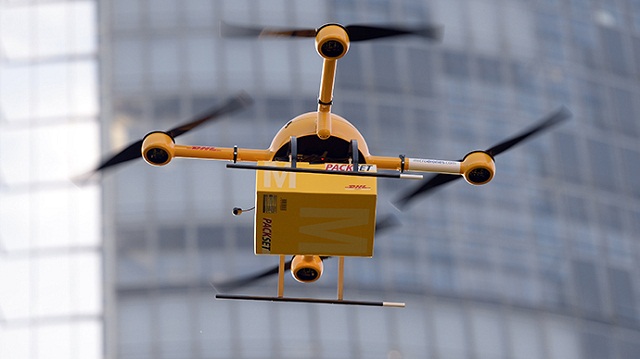
Faustina Fynn-Nyame narrated a story at the Women Deliver conference this week in Copenhagen, Denmark that highlighted the need for drones contraception delivery. It was about a mother in rural Ghana who wanted four children but later had seven. Fynn-Nyame is one of the staff of a reproductive health care nonprofit Marie Stopes International.
“She was let down by the community, the government and us,” Fynn-Nyame mentioned to the audience. There are a lot of women just like this Ghanaian mom who have no means of getting contraception.
Drones Contraception Delivery and Other Medical Supplies
Scroll down for video

Unsplash
Could drones be considered as a means of transporting contraception and vital medicines to the most isolated environment in the world?
The idea about drones contraception delivery came to being at an intellectual session that took place 2 years ago involving a group of public health professionals. They even agreed that it was a bit improbable or maybe not that improbable.
A lot of drone delivery programs have been coming up in the global health sector – particularly one collaboratively funded by the United Nations Population Fund and the Dutch government. The idea of drones contraception delivery was brought to life in 2014 by a group of public health professionals, local health authorities and private-sector partners while making attempts to discover means by which access to contraception for women in the most difficult-to-reach areas of sub-Saharan Africa is improved. This is a major challenge in this region as less than one-fifth of women use modern contraceptive. The World Health Organization roughly calculated that 225 million women in developing countries would wish to stop of delay child-bearing but do not have access to dependable birth control methods.
Just last year, in late November, an unmanned, automated machine with a wingspan of close to 50 inches took about 4.5 pounds of supplies like condoms and birth control pills and also vital medicines like oxytocin which prevents hemorrhage during the course of delivery, to areas in Ghana.
Drones can occupy large distances and can depart and land regardless of a runway. The main objective is to make the drone travel for close to 60 miles in one hour. The deliveries are dropped at a particular place specified. The goods are taken by a health care staff and moved to the local clinic.
If a motorcycle of truck is employed for the same purpose, it would require several hours at least. Bad roads and weather states could even complicate the process.
Dr. Renee Van de Weerdt, senior technical adviser of reproductive health commodities at United Nations Population Fund (UNFPA), mentioned that droned have a big capability to surpass tough terrain that is prevalent in the area.

Washington Post
“They can rapidly deliver supplies that are about to run out,” she says. “They might also prove useful in places where there is no ground transport. Many health workers currently have to hand-carry heavy boxes of medicines for long distances.”
The platform is, however, still in its pilot stage. Professionals are considering the cost-advantage before expanding it. They have to discover how much each supply would require. Terrain issues are also being considered. A second model is being designed with this challenge in mind.
Malawi began evaluating employing drones to increase time taken to fly blood samples from infants to test for HIV, just recently. Rwanda is also trying out drones to supply blood for transfusions to avoid deaths from postpartum hemorrhage.
A machine can, however, not do all alone.
Watch the video below